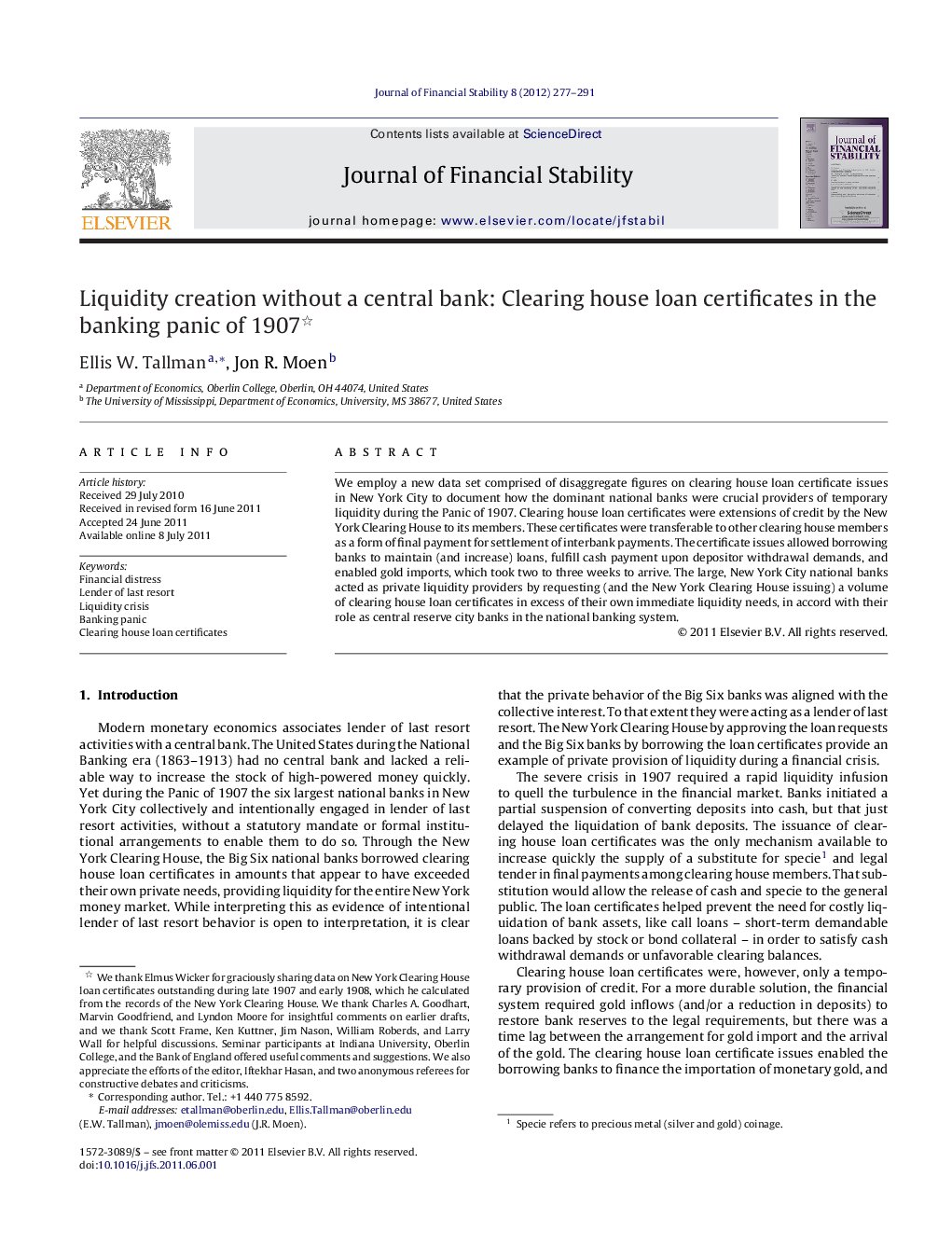| Article ID | Journal | Published Year | Pages | File Type |
|---|---|---|---|---|
| 999039 | Journal of Financial Stability | 2012 | 15 Pages |
We employ a new data set comprised of disaggregate figures on clearing house loan certificate issues in New York City to document how the dominant national banks were crucial providers of temporary liquidity during the Panic of 1907. Clearing house loan certificates were extensions of credit by the New York Clearing House to its members. These certificates were transferable to other clearing house members as a form of final payment for settlement of interbank payments. The certificate issues allowed borrowing banks to maintain (and increase) loans, fulfill cash payment upon depositor withdrawal demands, and enabled gold imports, which took two to three weeks to arrive. The large, New York City national banks acted as private liquidity providers by requesting (and the New York Clearing House issuing) a volume of clearing house loan certificates in excess of their own immediate liquidity needs, in accord with their role as central reserve city banks in the national banking system.
► Liquidity provision by private, New York Clearing House banks in 1907. ► Lacking a central bank, banks exchange clearing house loan certificates as IOUs. ► New daily data on requests and issues of clearing house loan certificates. ► Largest New York City correspondent banks were the main providers of liquidity. ► The New York Clearing House banks were private lenders of last resort in 1907.
